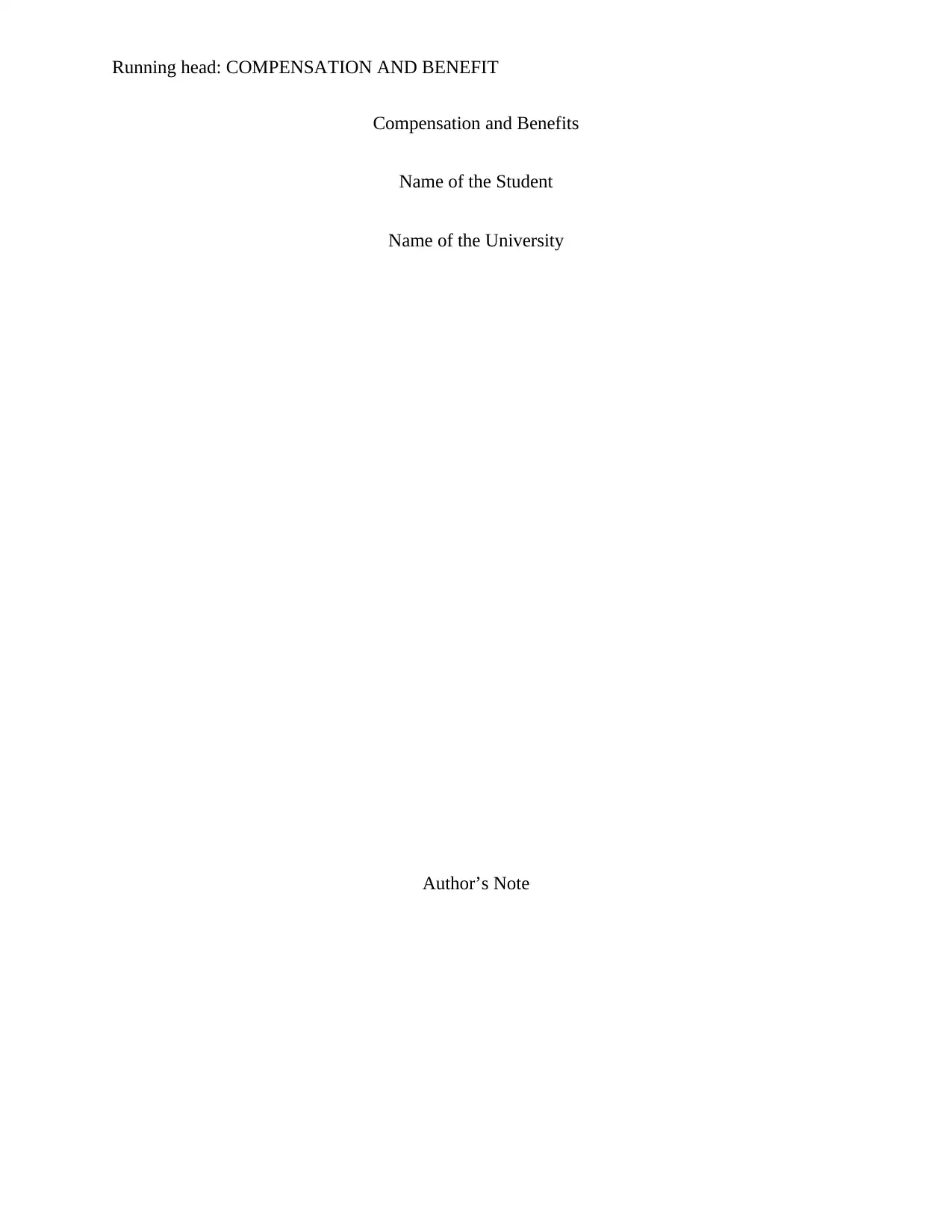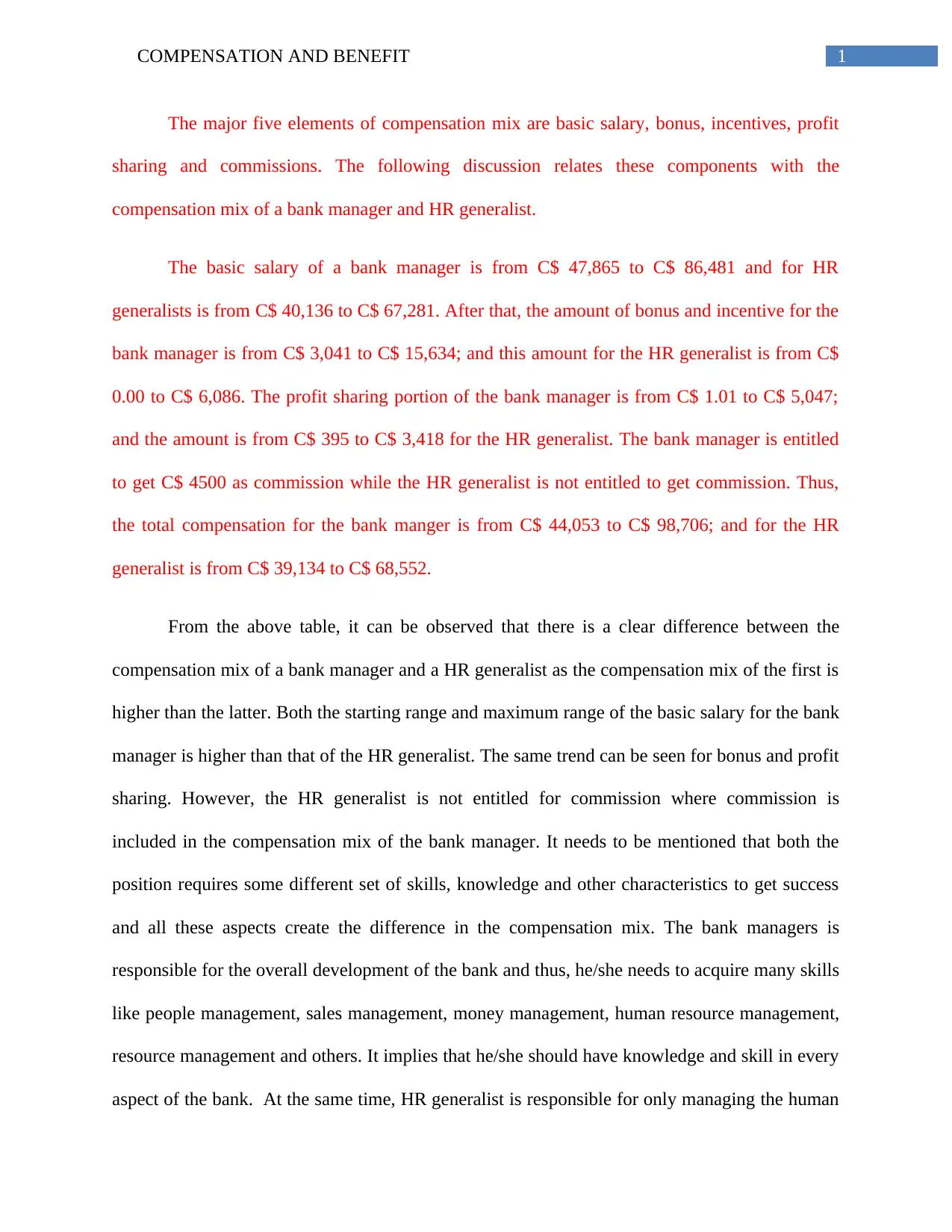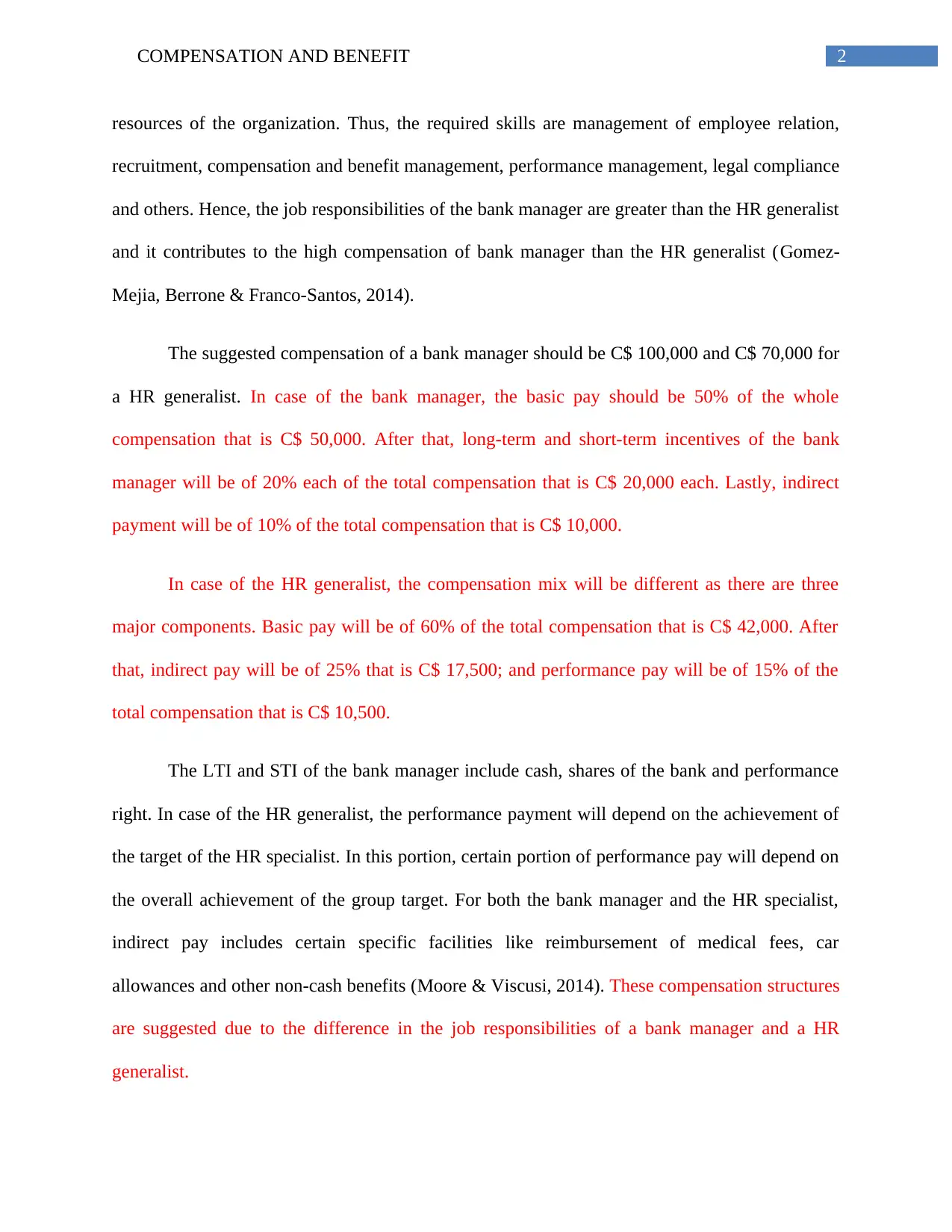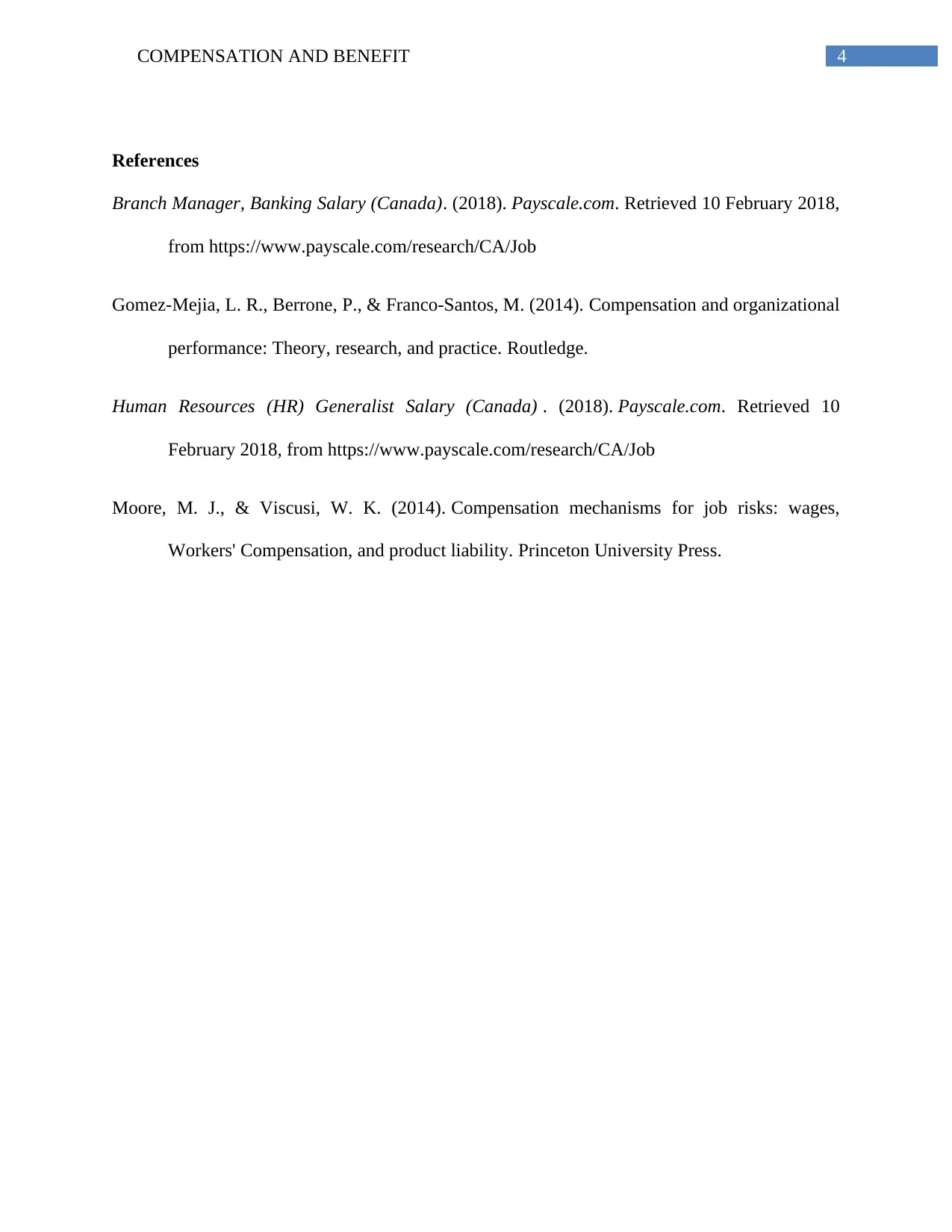Examining Compensation Structures: Bank Manager vs HR Generalist Role
VerifiedAdded on 2023/06/15
|5
|910
|149
Essay
AI Summary
This essay provides a comparative analysis of the compensation and benefits packages offered to bank managers and HR generalists. It highlights the key components of a compensation mix, including basic salary, bonuses, incentives, profit sharing, and commissions, and compares these elements for both roles. The essay notes the differences in compensation, suggesting that the bank manager role, with its broader responsibilities encompassing various aspects of bank operations, warrants a higher compensation compared to the HR generalist role, which primarily focuses on human resource management. Suggested compensation structures are proposed, allocating percentages to basic pay, short-term and long-term incentives, and indirect payments, tailored to the specific responsibilities and performance metrics of each position. The essay also specifies the types of incentives and benefits included in each compensation structure, such as cash, shares, performance rights, medical fee reimbursement, and car allowances.
1 out of 5











![[object Object]](/_next/static/media/star-bottom.7253800d.svg)